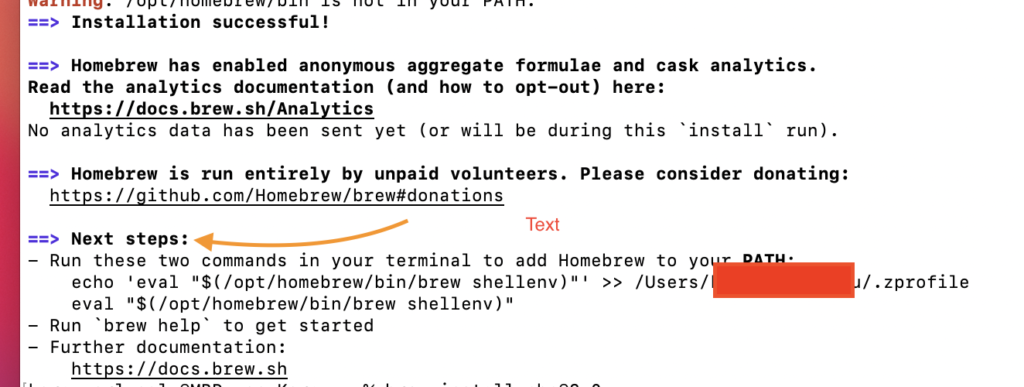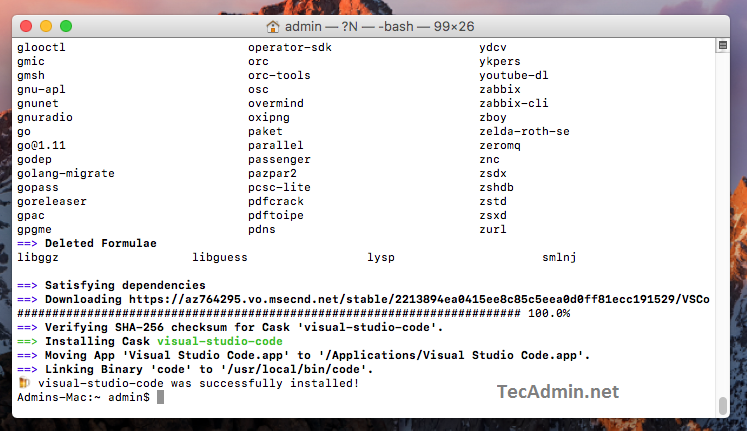

A Single Command to Run Python 3įor some of you reading this, this command may be enough.
Install parallel on mac brew install#
Until Apple decides to set Python 3.x, as the default you're going to have to install it yourself. Instead, it is recommended that you transition to using 'python3' from within Terminal. Future versions of macOS will not include Python 2.7. This version is included in macOS for compatibility with legacy software. If you try to run Python from your MacOS terminal, you'll even see this warning: WARNING: Python 2.7 is not recommended. And Python 4.x will be out soon, but it will be completely backward compatible.

The entire Python community has now moved on to using Python 3.x (the current version as of writing this is 3.9). But it's Python Version 2.7, which is now deprecated (abandoned by the Python developer community). Parallel Warp needs the mpi4py package, which can be installed using pip.MacOS comes with Python pre-installed. Library_dirs += Īfter this you can compile and install the parallel version by using "make pinstall". (This is needed since the final linking will be done by a C compiler which may not know which mpi libraries are needed for Fortran.) For example:

For example, add these lines:Īlso create a file to add the include and library paths for the Fortran libraries. If mpifort is not available, the compiler type and compiler executable need to be specified in a file called. When installing the parallel version of Warp in an environment that has the command mpifort available, no extra setup is needed. Specifying macros like this can also be done on the command line. For example, putting this line in Makefile.local3 will will set it so that Warp is installed in your home directory. If a modification of the make process is needed, create a file call Makefile.local 3 and put the modifications there instead of changing Makefile.Forthon3. The following will build the serial, single processor, version and install Warp into Python's site-packages directory, including the Warp scripts. The compilation requires a fortran compiler - the recommended one is gfortran. The fortran backend of Warp is called pywarp90, which can be compiled for single- or multi-processor support. Note that the directories "/usr/local/bin" and "/usr/local/opt/python/libexec/bin" need to be added to your execute path ahead of "/usr/bin" in order to use the correct Python.Īlternatively, Warp can be installed using Anaconda, which provides a extensive set of Python packages. After installing brew, you will need to do the following (gcc includes gfortran, and openmpi is only needed for running in parallel). This offers a number of advantages, including not needing sudo, the Python includes pip for easy package installation, and allows easy install of gfortran (as part of the gcc package), openmpi, and git among other things. On OSX, a recommended method of installation is to use the Python installed under HomeBrew. Note that with -user, there is no need to set PYTHONPATH.

Install parallel on mac brew how to#
For how to do this with Warp, see the comments below. using the command "python setup.py install -user". If you do not have root privileges, all of the packages can be installed in your home directory by adding the "-user" option when installing, i.e. On Mac OSX, XCode and it's development package need to be installed, as well as XQuartz. Note that depending on where Python is installed, root privilege may be needed to install the packages. This assumes that Python is already installed. Below are instructions on how to install the various packages. Several packages are needed to install and run Warp. Warp can be built and installed on Linux and Mac OSX.


 0 kommentar(er)
0 kommentar(er)
